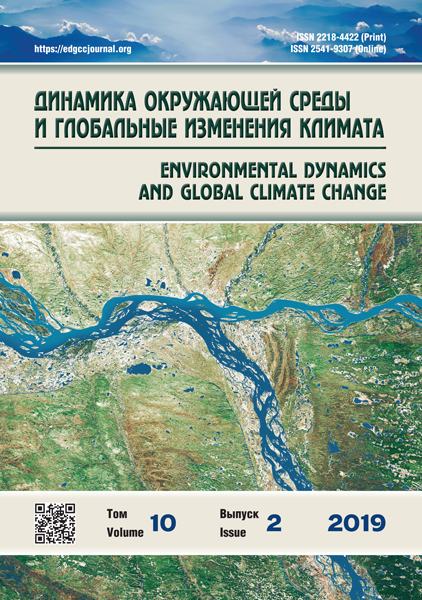Ecosystem processes in the area of the Tomsk water intake
- Authors: Kopysov S.1,2, Eliseev A.1,2, Chernova N.1, Klimova N.1, Dyukarev A.1, Pats E.1
-
Affiliations:
- Institute of Monitoring of Climatic and Ecological Systems SB RAS, Tomsk
- Tomsk State University
- Issue: Vol 10, No 2 (2019)
- Pages: 91-99
- Section: Experimental works
- Published: 21.04.2020
- URL: https://edgccjournal.org/EDGCC/article/view/21184
- DOI: https://doi.org/10.17816/edgcc21184
- ID: 21184
Cite item
Abstract
The influence of the Tomsk water intake on the ecosystems of the Ob-Tomsk interfluve is studied. It is revealed that the exploitation of the underground water field for almost 50 years has led to the transformation of the natural environment as a result of changes in the hydrological regime in the aeration zone. The most significant changes were observed in hydromorphic ecosystems located in the area of the first stage of water intake, which is associated with both the longest exposure and the feature of the lithological structure. Here and conducted another series of studies, ongoing since 2000, the estimation of the ecosystem assessment and moisture ecotopia phytoindication method. To reconstruct phytocenoses that existed before drying (before 2000), a Botanical analysis of the upper layers of peat was performed. The dependence of changes in the hydrological regime of ecotopes on the dynamics of groundwater levels associated with the operation of the Tomsk water intake against the background of cyclical climate variability is noted. The main changes in the water regime on the territory of the Ob-Tomsky interfluve occurred at the first stages of the water intake operation and the formation of a depression funnel in the area of the first stage, before the beginning of our research in 2000. Currently, the transformation processes have slowed down and there is a stable functioning of ecosystems in the new conditions of humidification, established at a more or less constant level, in accordance with the reduced volumes of water intake. Hydroclimatic calculations for the river basin. Poros have shown that the volume of groundwater renewal in the Ob-Tomsky interfluve exceeds the current volume of water abstraction, which excludes or significantly slows down the further transformation of ecosystems.
About the authors
Sergey Kopysov
Institute of Monitoring of Climatic and Ecological Systems SB RAS, Tomsk;Tomsk State University
Author for correspondence.
Email: wosypok@mail.ru
J
Russian FederationArtem Eliseev
Institute of Monitoring of Climatic and Ecological Systems SB RAS, Tomsk;Tomsk State University
Email: wosypok@mail.ru
Natalya Chernova
Institute of Monitoring of Climatic and Ecological Systems SB RAS, Tomsk
Email: wosypok@mail.ru
Nina Klimova
Institute of Monitoring of Climatic and Ecological Systems SB RAS, Tomsk
Email: wosypok@mail.ru
Anatoly Dyukarev
Institute of Monitoring of Climatic and Ecological Systems SB RAS, Tomsk
Email: wosypok@mail.ru
Elena Pats
Institute of Monitoring of Climatic and Ecological Systems SB RAS, Tomsk
Email: wosypok@mail.ru
Supplementary files










